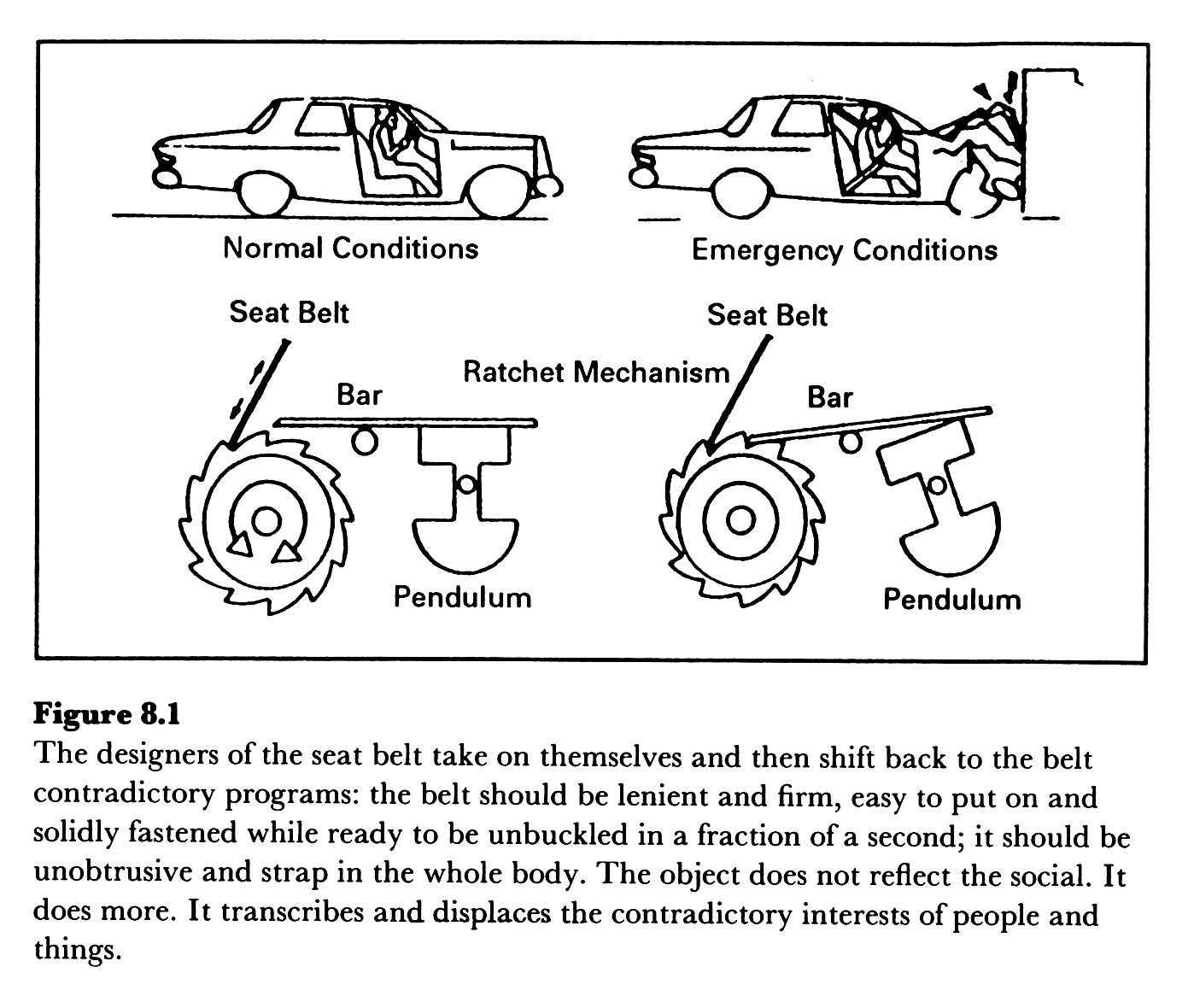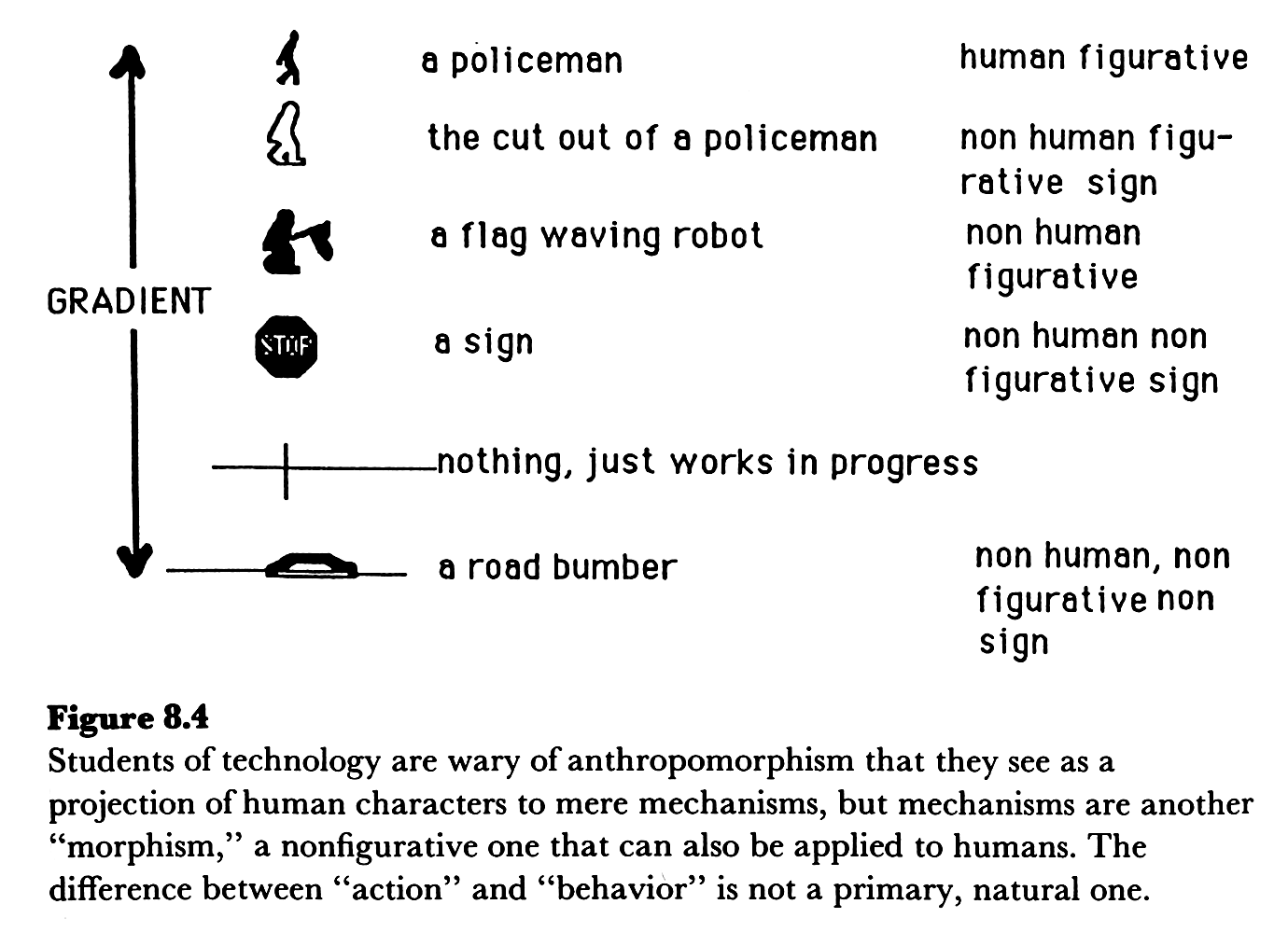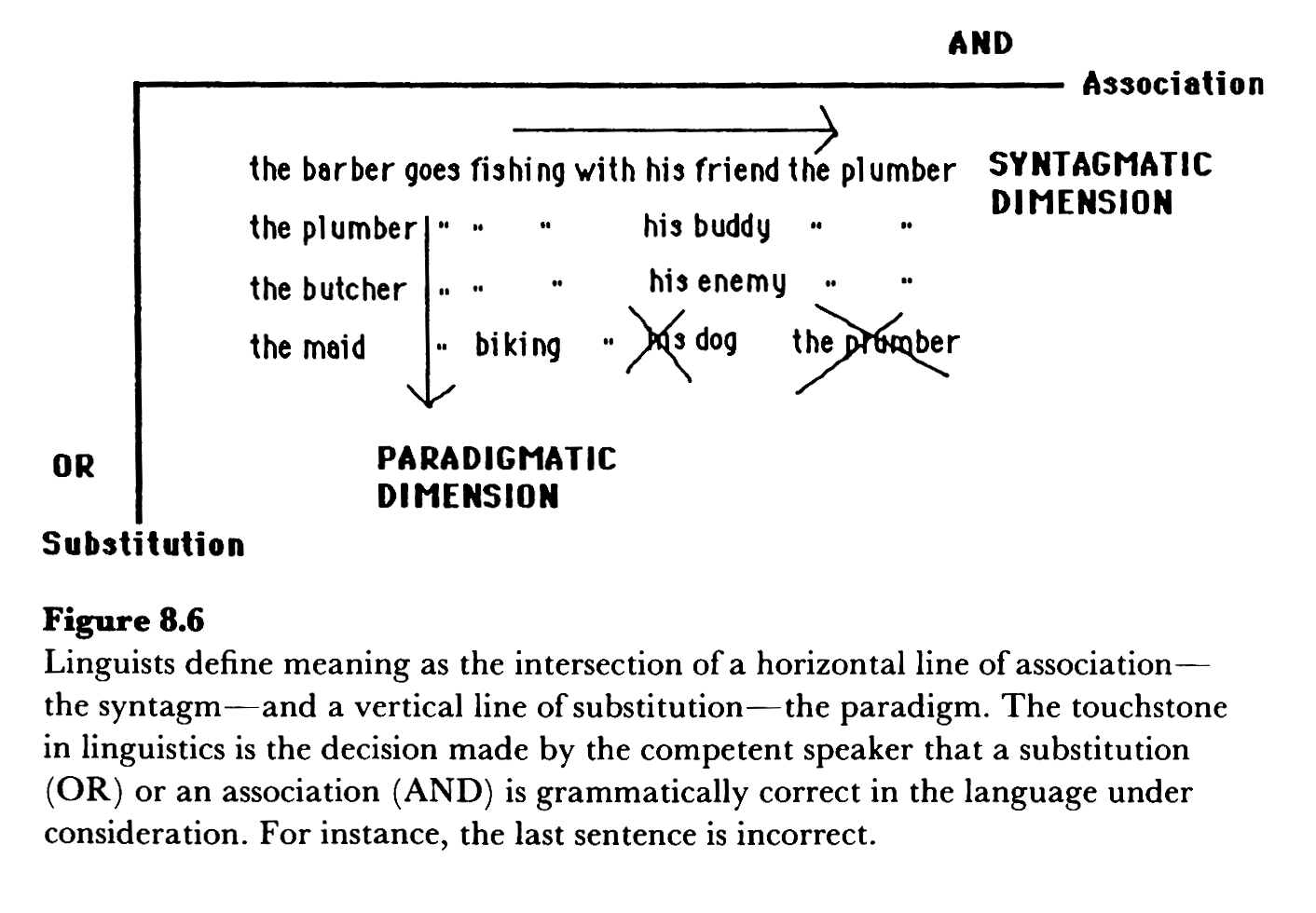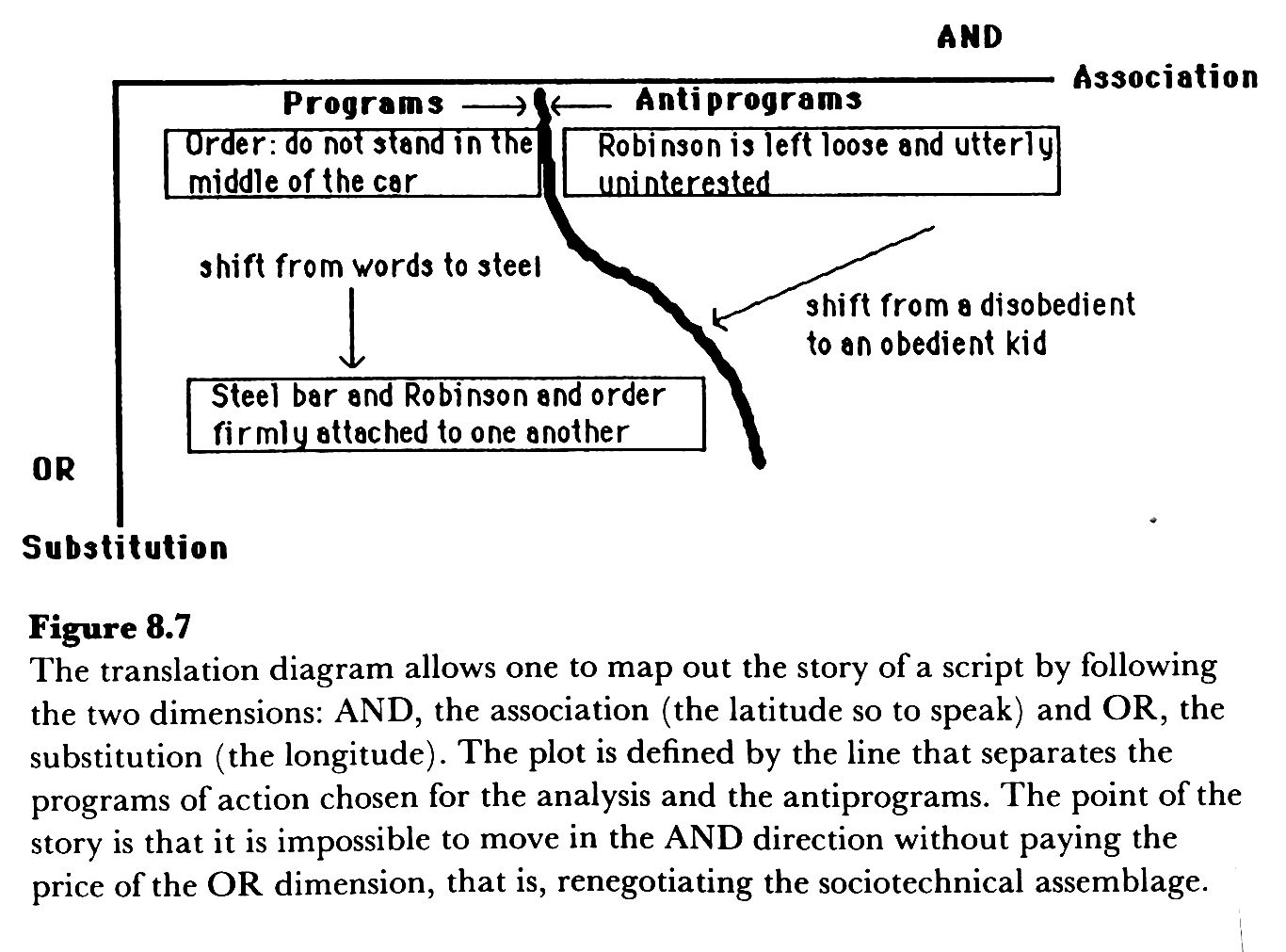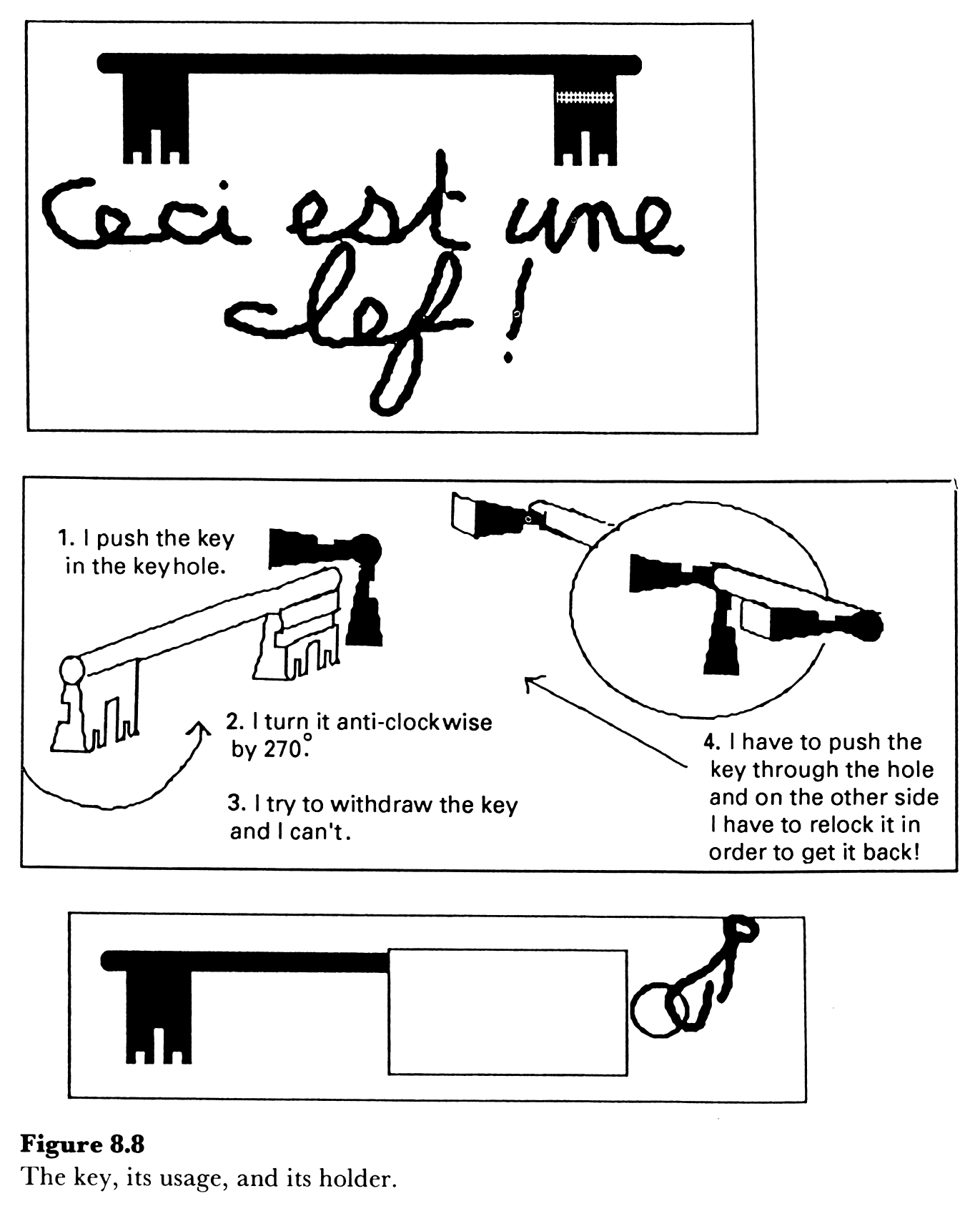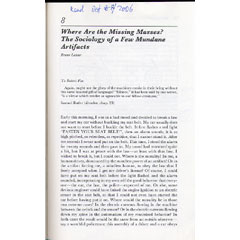
NOTE: This essay is Chapter 8 (pages 225-258) of Bijker & Law (1992) - Shaping Technology / Building Society: Studies in Sociotechnical Change
[227] {actor network theory, posthumanism, social, sociology, class, human, nonhuman, technology, objects, artifacts, 19th century, history} To balance our accounts of society, we simply have to turn our exclusive attention away from humans and look also at nonhumans. Here they are, the hidden and despised social masses who make up the morality. They knock at the door of sociology, requesting a place in the accounts of society as stubbornly as the human masses did in the nineteenth century. What our ancestors, the founders of sociology, did a century ago to house the human masses in the fabric of social theory, we should do now to find a place in a new social theory for the nonhuman masses that beg us for understanding.
[229] {human, nonhuman, technology, role, function} As a more general descriptive rule, every time you want to know what a nonhuman does, simply imagine what other humans or other nonhumans would have to do were this character not present. This imaginary substitution exactly sizes up the role, or function, of this little character.
[231] {human, nonhuman, time, shift} A profound temporal shift takes place when nonhumans are appealed to; time is folded.
[232] {presciptive, prescription, technology, morals, ethics, objects, artifacts, mechanisms, increase, stability, growth} Prescription is the moral and ethical dimension of mechanisms... The sum of morality does not only remain stable but increases enormously with the population of nonhumans.
[233] {technology, machine, engineer, inventor, invention, morality, text, management, human, nonhuman} This description of a machine -- whatever the means -- retraces the steps made by the engineers to transform texts, drafts, and projects into things. The impression given to those who are obsessed by human behavior that there is a missing mass of morality is due to the fact that they do not follow this path that leads from text to things and from things to texts. They draw a strong distinction between these two worlds, whereas the job of engineers, instructors, project managers, and analysists is to continually cross this divide. Parts of a program of action may be delegated to a human, or to a nonhuman.
[235] {anthropomorphism, technology, human, nonhuman, nature, posthumanism} I constantly talk with my computer, who answers back; I am sure you swear at your old car; we are constantly granting mysterious faculties to gremlins inside every conceivable home appliance, not to mention cracks in the concrete belt of our neuclear plants. Yet, this behavior is considered by sociologists as a scandalous breach of natural barriers. When you write that a groom is "on strike," this is only seen as a "projection," as they say, of a human behavior onto a nonhuman, cold, technical object, one by nature impervious to any feeling. This is anthropomorphism, which for them is a sin akin to zoophily but much worse. It is this sort of moralizing that is so irritating for technologists, because the automatic groom is already anthropomorphic through and through... The groom is indeed anthropomorphic, in three senses: first, it has been made by humans; second, it substitutes for the actions of people and is a delegate that permanently occupies the position of a human; and third, it shapes human action by prescribing back what sort of people should pass through the door. And yet some would forbid us to ascribe feelings to this thoroughly anthropomorphic creature, to delegate labor relations, to "project" -- that is, to translate -- other human properties to the groom.
[241] {technolgy, artifact, human, nonhuman, anthropomorphism, technomorphism, phusimorphism} The label "inhuman" applied to techniques simply overlooks translation mechanisms and the many choices that exist for figuring or defiguring, personifying or abstracting, embodying or disembodying actors. When we say that they are "mere automatisms," we project as much as when we say that they are "loving creatures," the only difference is that the latter is an anthropomorphism and the former a technomorphism or phusimorphism.
[245] {technology, social, society, human, nonhuman, superhuman, god, religion} In our societies there are two systems of appeal: nonhuman and superhuman -- that is, machines and gods.
[247] {engineer, inventor, invention, reinscription, human, nonhuman, technology, artifact} The only way to follow engineers at work is not to look for extra- or intrasomatic delegation, but only ath their work of re-inscription. The beauty of artifacts is that they take on themselves the contradictory wishes or needs of humans and non-humans.
[247] {technology, mechanism, artifact, context, science, scientist, literature, inventor, engineer, invention} Looking at the mechanism alone is like watching half the court during a tennis game; it appears as so many meaningless moves. What analysts of artifacts have to do is similar to what we all did when studying scientific texts: we added the other half of the court. The scientific literature looked dull, but when the agnostic field to which it reacts was brought back in, it became as interesting as an opera. The same with seat belts, road bumpers, and grooms.
[248] {literature, literary criticism, technology, technological criticism, social, technologists} Unfortunately, there are many more literary critics than technologists, and the subtle beauties of technosocial imgroglios escape the attention of the literate public.
[250] {syntagmatic, paradigmatic, syntagm, paradigm, linguistics, technology}

